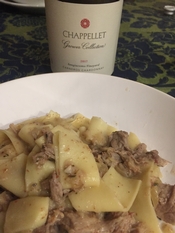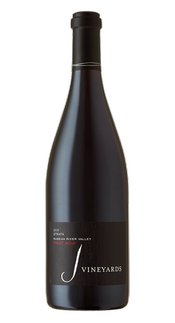 was founded in 1980, you’ll be in familiar territory here, with each recipe being tested and reworked again and again until the editors come up with what they consider the best possible formula for any given dish.
was founded in 1980, you’ll be in familiar territory here, with each recipe being tested and reworked again and again until the editors come up with what they consider the best possible formula for any given dish.
The collection of recipes covers a wide range of tasty options, starting with “Fluffy Scrambled Eggs.” Even if you think you’re already an expert on scrambled eggs you might still find some helpful information in the notes. Did you already know that overbeaten eggs can be tough (eggs should be whisked only until they are combined, we’re told), and that you should always use milk rather than water when whisking the eggs?
The last recipe in the book is for Chocolate Pots de Crèmes. This distinctly user-friendly version on the classic (which, the notes point out, can be “finicky and laborious”) is unconventionally cooked in a saucepan on the stovetop rather than in the oven, and then spooned into ramekins
.
In between the scrambled eggs and the chocolate dessert, you’ll find a wealth  of recipes ranging from soups and stews to pies, cakes and fruit desserts. I decided to try the Pork, Fennel and Lemon Ragu with Pappardelle (p. 280), partly because I was attracted by the mouth-watering photograph of the dish, but also because one of the things I like about following a recipe is imagining what sort of wine might be the best partner for a particular recipe. The book offers no detailed suggestions or recommendations of specific wines to pair with the dish, so I was on my own here.
of recipes ranging from soups and stews to pies, cakes and fruit desserts. I decided to try the Pork, Fennel and Lemon Ragu with Pappardelle (p. 280), partly because I was attracted by the mouth-watering photograph of the dish, but also because one of the things I like about following a recipe is imagining what sort of wine might be the best partner for a particular recipe. The book offers no detailed suggestions or recommendations of specific wines to pair with the dish, so I was on my own here.
Since the ragu is rich with pork, cheese and cream, I wasn’t sure whether it might be best with a comparably rich white wine or mouth-filling red. The best thing to do, I decided, was to open a bottle of  each. I invited a couple of friends over for dinner and asked them to weigh in on the decision after we tasted the dish. These are the wines I’d selected: Chappellet (Carneros, California) Sangiacamo Vineyard Chardonnay “Grower Collection” 2017 ($45), and J Vineyards (Russian River Valley, Sonoma County, California) Pinot Noir “Strata” 2016 ($55).
each. I invited a couple of friends over for dinner and asked them to weigh in on the decision after we tasted the dish. These are the wines I’d selected: Chappellet (Carneros, California) Sangiacamo Vineyard Chardonnay “Grower Collection” 2017 ($45), and J Vineyards (Russian River Valley, Sonoma County, California) Pinot Noir “Strata” 2016 ($55).
Everyone loved the dish despite the fact that I’d forgotten to add the reserved fennel fronds before serving it. I liked both wines pretty much equally with it…although the general consensus was that the Chardonnay was perhaps a very slightly better partner for the ragu’s lush texture and creamily seductive flavors. With its authentic varietal character and beautifully balanced flavors of lemon and buttery brioche, the Chappellet wine absolutely hit all the right notes. The Pinot Noir’s deep flavors and gorgeous silky texture also provided a delicious accompaniment to the dish although its delicate hints of tannin, spice and earth may have tipped a couple of the tasters into slightly choosing the Chardonnay.
I urge you to try this tasty experiment yourself: Pick a couple of different wines to compare, and invite some friends over to taste the dish and see which wine gets the most votes. Make the dish the day ahead if you have time so that you can easily de-grease it before serving. And don’t forget the fennel fronds.
